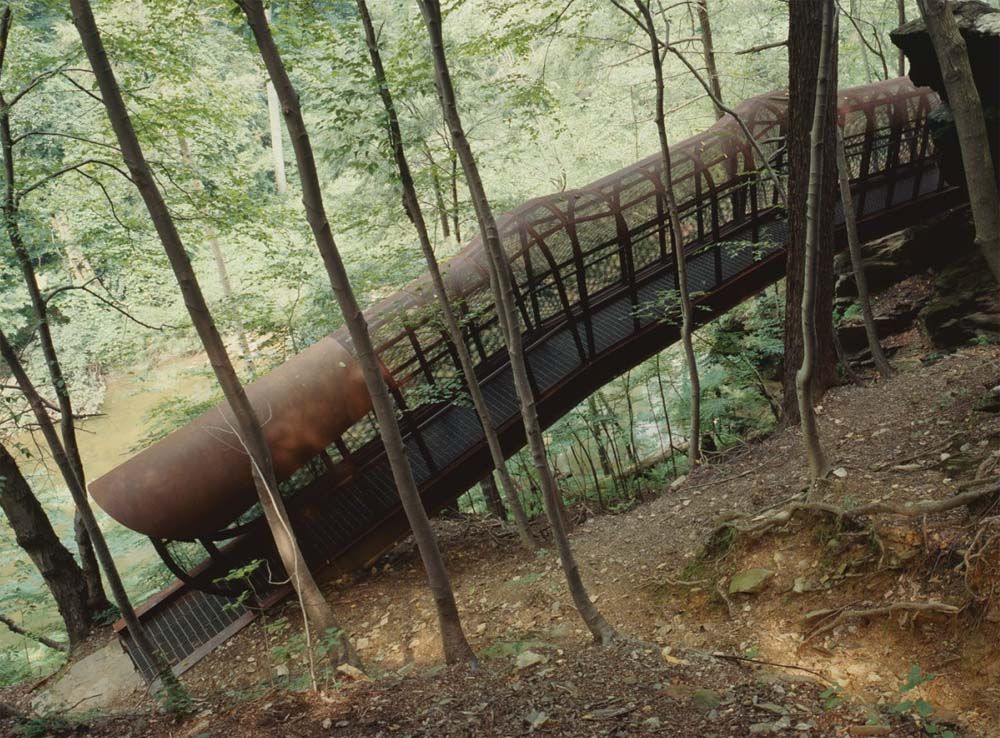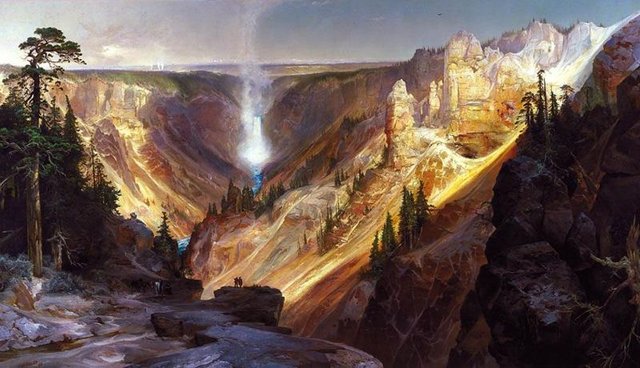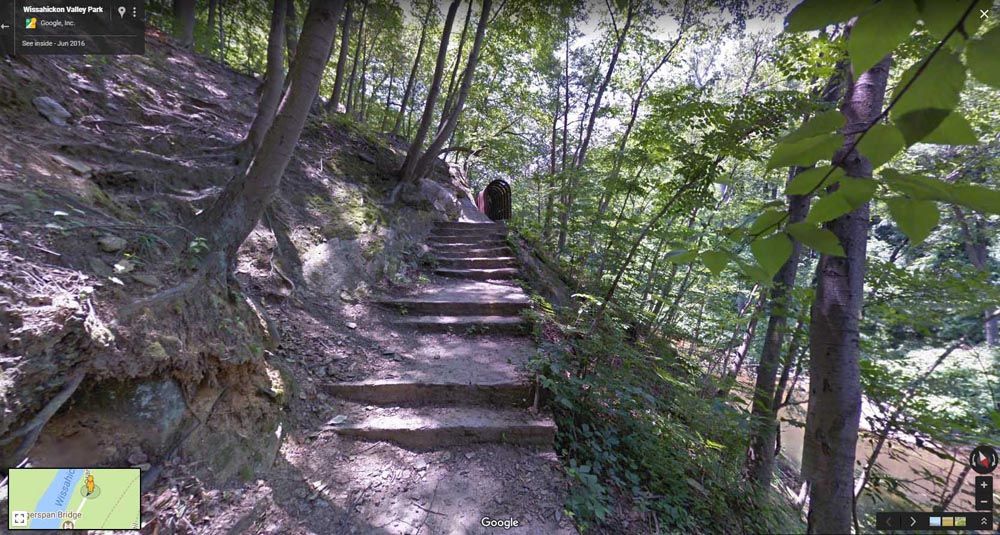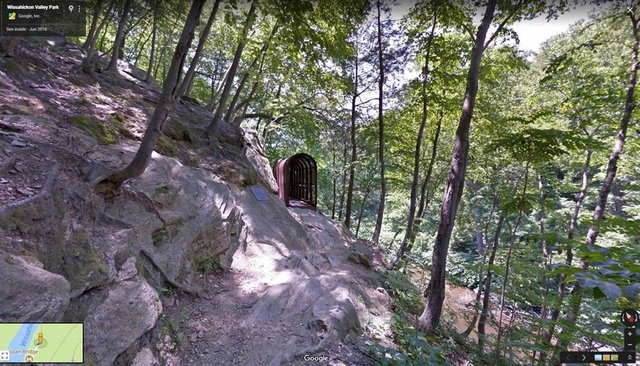Are Digital Experiences Robbing Reality?
There’s a bridge deep in Philadelphia’s Wissahickon Valley that’s an inaccessible work of art. It’s been there for thirty years now, having been lowered onto the craggy hillside by helicopter. There’s nothing quite like it. Fingerspan is a unique experience, if you can get there.
 Fingerspan (Source: Association for Public Art)
Fingerspan (Source: Association for Public Art)
Rather, it was unique until recently, when the digital version of the experience stepped in. In the 1980s, artist Jody Pinto wasn’t thinking about how the online visitor might take in the Fingerspan experience. From her narration it’s clear she was depending on the actual encounter:
"As you pass through this bridge, you bring the bridge to life and at the same time you become the muscle and the sinew and the cellular structure of Fingerspan."
But what if your “muscle and sinew and cellular structure” is parked in front of a computer or a digital device anywhere but in the Wisshahickon Valley? Does that count as bringing the bridge to life? Does that help create the bridge in our imaginations and make us part of the bridge’s reality?
Now that we have the option of a digital encounter, will that become the preferred experience here or other sites that have been treasured as hyper real?
In 2012, Google Street View added to its array of digital experiences 9,500 panoramas of the Grand Canyon. “The Google Maps team walked through the canyon carrying the Android-operated, 40-pound Trekker backpacks,” we learn, “a 15-lens camera system…took the images.”
It’s an impressive experience; it’s a cool experience. It comes without the risk of dehydration, without having to share narrow trails over abysses with sleepy mules. But it comes without a sense of actual accomplishment, without real awe.
But wait a minute. Back in the 1872, the United States Congress took a good look at Thomas Moran’s 7-by 12-foot painting The Grand Canyon of the Yellowstone and responded by designating it the world’s first national park.
 Thomas Moran, The Grand Canyon of the Yellowstone, 1872. (Source: Smithsonian American Art Museum)
Thomas Moran, The Grand Canyon of the Yellowstone, 1872. (Source: Smithsonian American Art Museum)
So maybe there is something to this idea of a surrogate experience adding significant value to the real thing.
Adding value to a real experience is just that. The painted or digital representation plays an important role in the extended life of the real thing, but it isn’t the same as the authentic thing, the authentic experience. Not even close.
When we experience Fingerspan online via Google Street View, as can be seen here and in the screenshots below, we have—we must always keep in mind—created a reality steps away from the original.



 Fingerspan (Source: from Google Street View)
Fingerspan (Source: from Google Street View)
That new reality has different and wonderful characteristics compared with the original —most amazingly its universal accessibility. You can spend all the time you want traversing Fingerspan digitally, but unless you hike out to it, cross it on foot in boots-on-the-ground-style, bringing the bridge to life as the artist hoped, becoming its “muscle and…sinew and…cellular structure,” you haven’t had the real experience. You haven’t, says the artist, brought the bridge to life. To put it another way, without the real you crossing the bridge, it's a non-experience, a dead bridge.
Or could the opposite be true? That the online experience brings Fingerspan to life in ways the artist never imagined?
What do you think?

As you opened, a digital experience is a digital experience, it is not a substitute for the real thing. It may however encourage people to make the effort to experience the real thing. It has its place, but will always be less.
Thanks, @leoplaw. Right. The two types of experiences are not substitutes in any way for one another. And how and where they impact each other is something we need to more deeply and accurately understand. Not only how the digital version may increase visitation, but how it can blunt surprise and how it shapes expectation and perception. In 1987, many visitors to Fingerspan would have only heard about it previous to hiking to it. Today, they most likely arrive with the illusion that they've already been there.
That is one of the greatest illusions today, because it has been seen and heard on a screen, people believe they claim to have experienced and therefore influence it. Armchair adventurers and activists.
@minboot resteem this Post .

Follow me to Resteem!
I don't think everybody needs to be able to experience every artwork. I also feel as though in experiencing something digitally you're going to be much less inclined to seek out the fuller experience of it, which is a very concerning trend considering how much of our lives is now mediated by digital media. I'd personally much rather see it in real life than this iteration, though its existence online does at least stand to provoke that little bit extra at least.
Agreed, @stryptos! The wide availability of digital versions of experiences are bound to have many impacts, I wonder if the simulation of walking through the bridge could be augmented in any useful way to enrich the digital experience. It may be - and maybe it should be - that in another year or two we look at Google Street View walk through as plain vanilla and boring.
Yes @kenfinkel, simply digitizing an artwork isn't enough.. In digitizing a piece you're making an entirely new artwork and I don't feel as though that's explored or even acknowledged nearly enough. Much like the constant digitization of so many aspects of so many diverse culture isn't generally seen to undermine that diversity, though I believe it often does.
Yes. The devil is in the details. The new is in the nuance. We should be very motivated to reflect on these observations, to react and experiment. Much to be learned.
Congratulations @kenfinkel, this post is the most rewarded post (based on pending payouts) in the last 12 hours written by a User account holder (accounts that hold between 0.1 and 1.0 Mega Vests). The total number of posts by User account holders during this period was 1999 and the total pending payments to posts in this category was $2962.24. To see the full list of highest paid posts across all accounts categories, click here.
If you do not wish to receive these messages in future, please reply stop to this comment.
stop